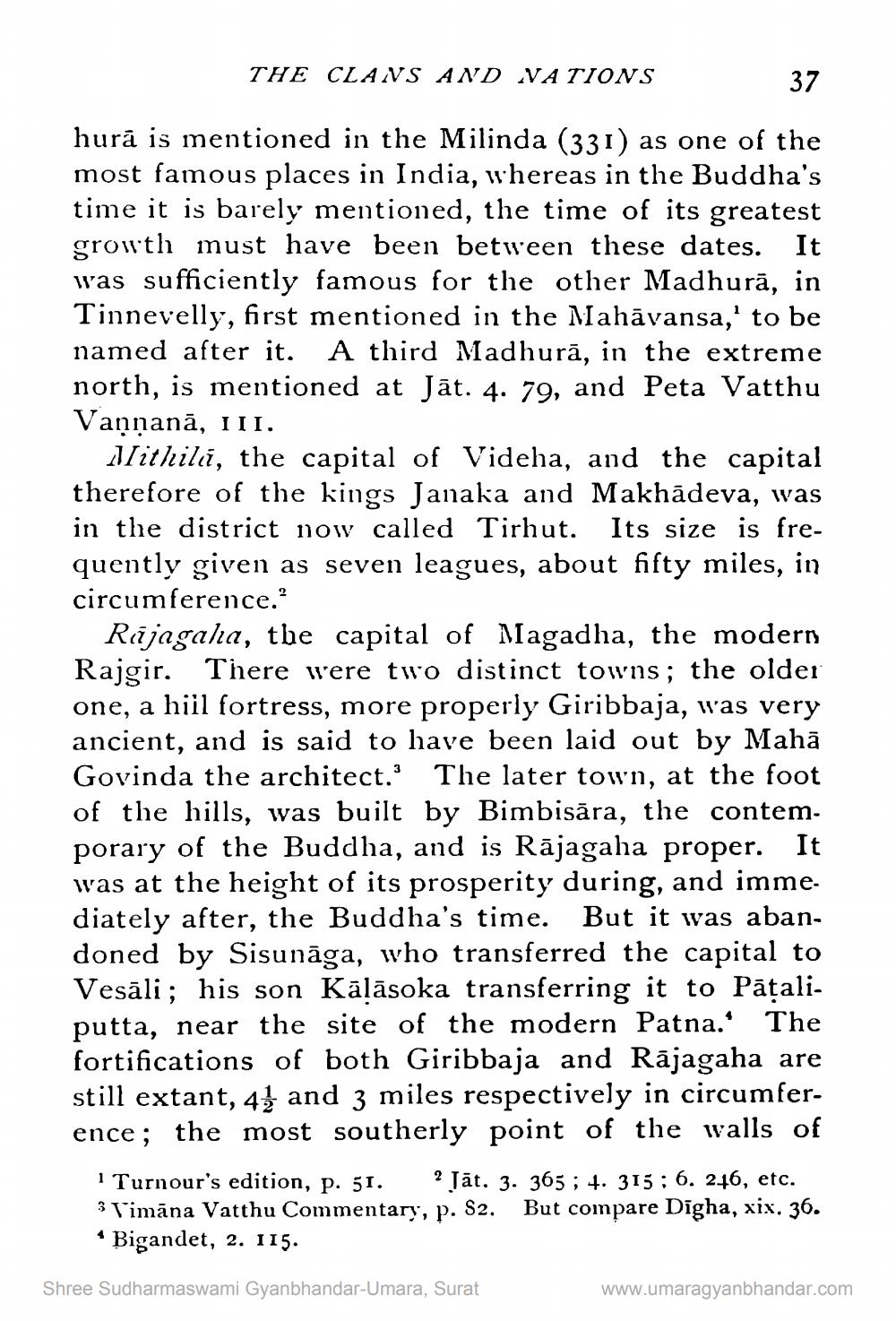________________
THE CLANS AND VATIONS
37
hurā is mentioned in the Milinda (331) as one of the most famous places in India, whereas in the Buddha's time it is barely mentioned, the time of its greatest growth must have been between these dates. It was sufficiently famous for the other Madhurā, in Tinnevelly, first mentioned in the Mahāvansa,' to be named after it. A third Madhurā, in the extreme north, is mentioned at Jāt. 4. 79, and Peta Vatthu Vannanā, III.
Nithilii, the capital of Videha, and the capital therefore of the kings Janaka and Makhādeva, was in the district now called Tirhut. Its size is frequently given as seven leagues, about fifty miles, in circumference.”
Riijagaha, the capital of Magadha, the modern Rajgir. There were two distinct towns; the older one, a hiil fortress, more properly Giribbaja, was very ancient, and is said to have been laid out by Mahā Govinda the architect. The later town, at the foot of the hills, was built by Bimbisāra, the contemporary of the Buddha, and is Rājagaha proper. It was at the height of its prosperity during, and imme. diately after, the Buddha's time. But it was abandoned by Sisunāga, who transferred the capital to Vesāli; his son Kālāsoka transferring it to Pāțaliputta, near the site of the modern Patna. The fortifications of both Giribbaja and Rājagaha are still extant, 41 and 3 miles respectively in circumference; the most southerly point of the walls of
· Turnour's edition, p. 51. ? Jāt. 3. 365 ; 4. 315; 6. 246, etc. 3 limāna Vatthu Commentary, p. 82. But compare Digha, xix. 36. * Bigandet, 2. 115.
Shree Sudharmaswami Gyanbhandar-Umara, Surat
www.umaragyanbhandar.com




